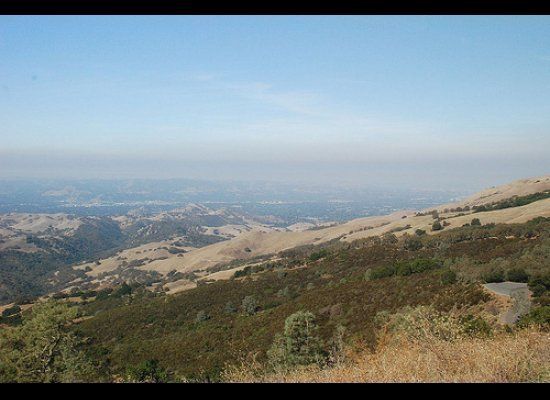Election season is winding down, and the World Series is over.
Searching for some new evening entertainment? Look up.
Starting Monday and continuing for the next two weeks, two prominent meteor showers will be lighting up the night sky with flashes of fireballs and shooting stars.
(SCROLL DOWN FOR PHOTOS)
The first, the Taurid meteors -- sometimes called the "Halloween Fireballs" -- appear every fall between mid-October and early December. Astronomers say that because of the peak of activity and the brightness of the moon, the seven days between Monday and Nov. 12 should make for the best viewing this year.
The second, the Leonid meteors, are expected to be best viewed around Nov. 17, although they will be active all month.
If conditions are right, the Taurids should produce about five visible shooting stars per hour, and the Leonids 15 or more, although the Taurids can be slower-moving and brighter.
Stargazers say the best viewing is well after midnight in remote areas, away from the light pollution of cities.
"If you are out there at 2 or 3 in the morning you have a better chance, because the point of the sky where the meteors are coming from will be higher in the sky," Ben Burress, staff astronomer of Chabot Space and Science Center in Oakland, said of the Taurids.
Among the top Bay Area spots, according to Burress: Henry Coe State Park in Morgan Hill; Mount Diablo Road in Contra Costa County; Skyline Boulevard, through Santa Clara and San Mateo County; Redwood Road above Oakland or just about anywhere up high and out of the forest in the Santa Cruz Mountains.
"It's exciting," he said. "There's a sense of anticipation when you go out and wait for a meteor. You never know when it is going to happen, how bright, or the color. They leave an impression. They can be very beautiful. Go out, dress up warm, take a comfortable chair or blanket and bring some friends."
The Leonids, which will peak between Nov. 14 and 18, are best viewed just before dawn.
"The Leonids are a great shower for morning people. If you are comfortable rising an hour or two before sunrise, you can expect to see them," said Peter Jenniskens, a senior research scientist at the SETI Institute and at NASA Ames Research Center in Mountain View.
When it comes to casual stargazers, sometimes the difference between meteor, asteroid and comet can be confusing.
A meteoroid is a small rocky or metal object -- usually between the size of a grain of sand and a boulder -- that orbits the sun. When one bursts into Earth's atmosphere and vaporizes, it's called a meteor, or a "shooting star." Millions of meteors enter Earth's atmosphere every year; most of them are tiny and burn up.
But some crash to the ground. When that happens, they are called meteorites.
Asteroids, by comparison, are larger. Made of rock or metal, they also orbit the sun. Historically, objects larger than about 10 meters across have been called asteroids; smaller than that they've been called meteoroids.
Comets are large bodies of ice, rock and dust -- "dirty snowballs" that can be several miles wide -- and orbit the sun. Debris from comets are the source of many meteoroids.
Since asteroids, comets and meteoroids originated billions of years ago, scientists study them to learn about the origin of the solar system. Some researchers believe that the carbon-based molecules and other materials that served as the building blocks of life on Earth nearly 4 billion years ago may have been brought here through asteroid and comet collisions with our planet.
The Taurid meteor shower, first recorded in 1786, is believed to come from Encke's Comet, which orbits the sun every three years, the shortest round trip of any known comet. The Taurids are named after the constellation Taurus, where they appear to originate from.
The Leonid meteor shower, which was first recorded in 902 AD by Chinese astronomers, comes from the comet Temple-Tuttle and is named for constellation Leo.
On Oct. 17, a nighttime fireball crashing over the Bay Area was caught on film and its pieces slammed into the ground in the North Bay. So far, four meteorites have been confirmed from that event, Jenniskens said. All are blackish-brown pebbles found in Novato. Others could still be found between Novato and St. Helena, he said.
Jenniskens, who noted that about 40,000 meteorites have been confirmed and named since the 1800s, urged anyone who thinks they may have found pieces to check his blog at http://cams.seti.org and contact him.
"These events bring space to the people. This makes it personal," he said. "If you find a rock and you think you may have a rock from space in your hand, that is something extraordinary."
Paul Rogers covers resources and environmental issues. Contact him at 408-920-5045. Follow him at Twitter.com/PaulRogersSJMN.
Meteor, Comet or asteroid?
Meteoroid: A small rocky or metal object, usually between the size of a grain of sand or a boulder, that orbits the sun. It originates from a comet or asteroid.
Meteor: A meteoroid that enters the earth's atmosphere and vaporizes. Also called a "shooting star."
Meteorite: A meteor that hits Earth without burning up in the atmosphere.
Meteor shower: A collection of meteors visible when earth passes through a trail of debris left by a comet.
Asteroid: An object larger than a meteoroid that orbits the sun and is made of rock or metal. Historically, objects larger than 10 meters across have been called asteroids; those smaller than that are called meteoroids.
Comet: A body of ice, rock and dust that can be several miles in diameter and which orbits the sun. Debris from comets is the source of many meteoroids. ___
(c)2012 the San Jose Mercury News (San Jose, Calif.)
Visit the San Jose Mercury News (San Jose, Calif.) at www.mercurynews.com
Distributed by MCT Information Services
